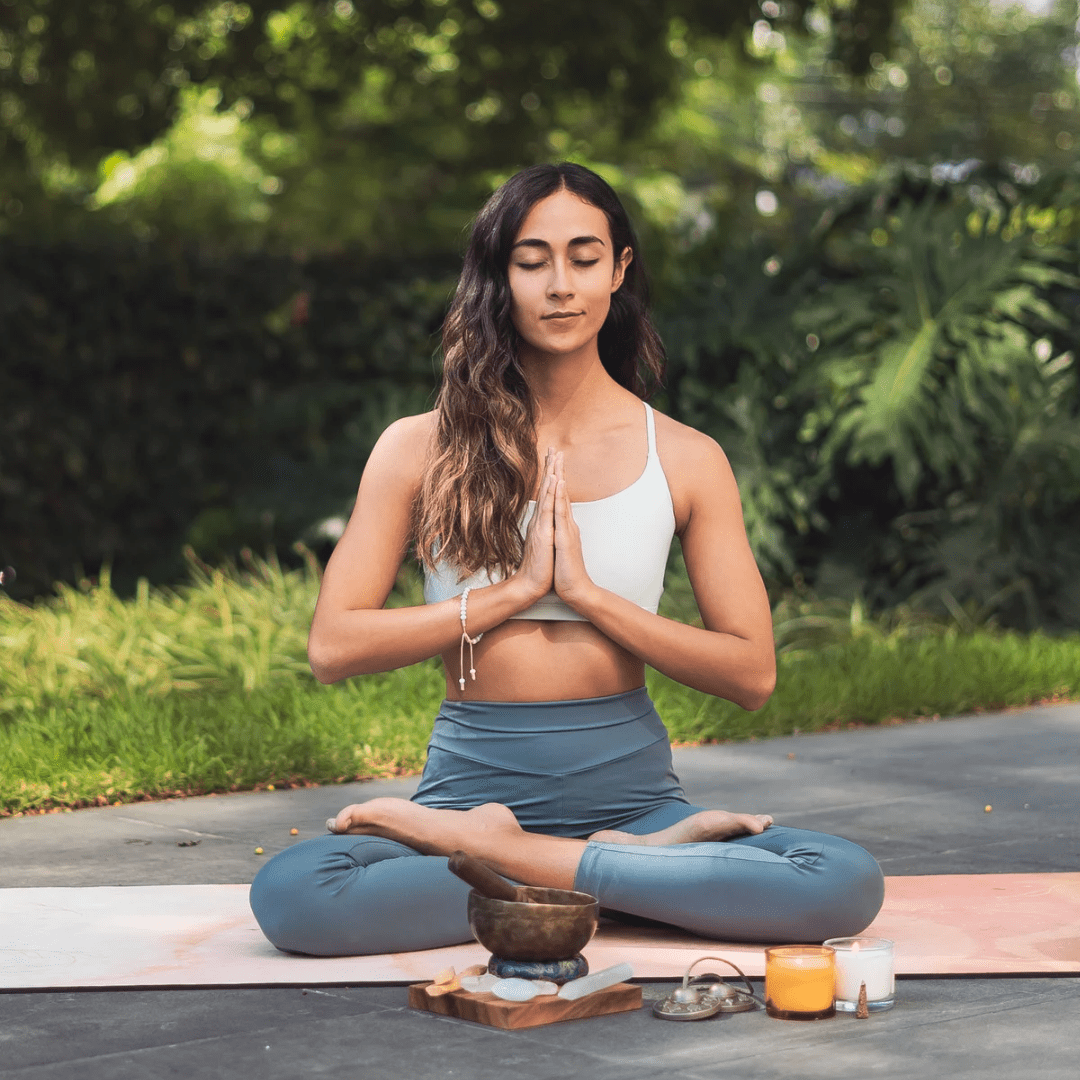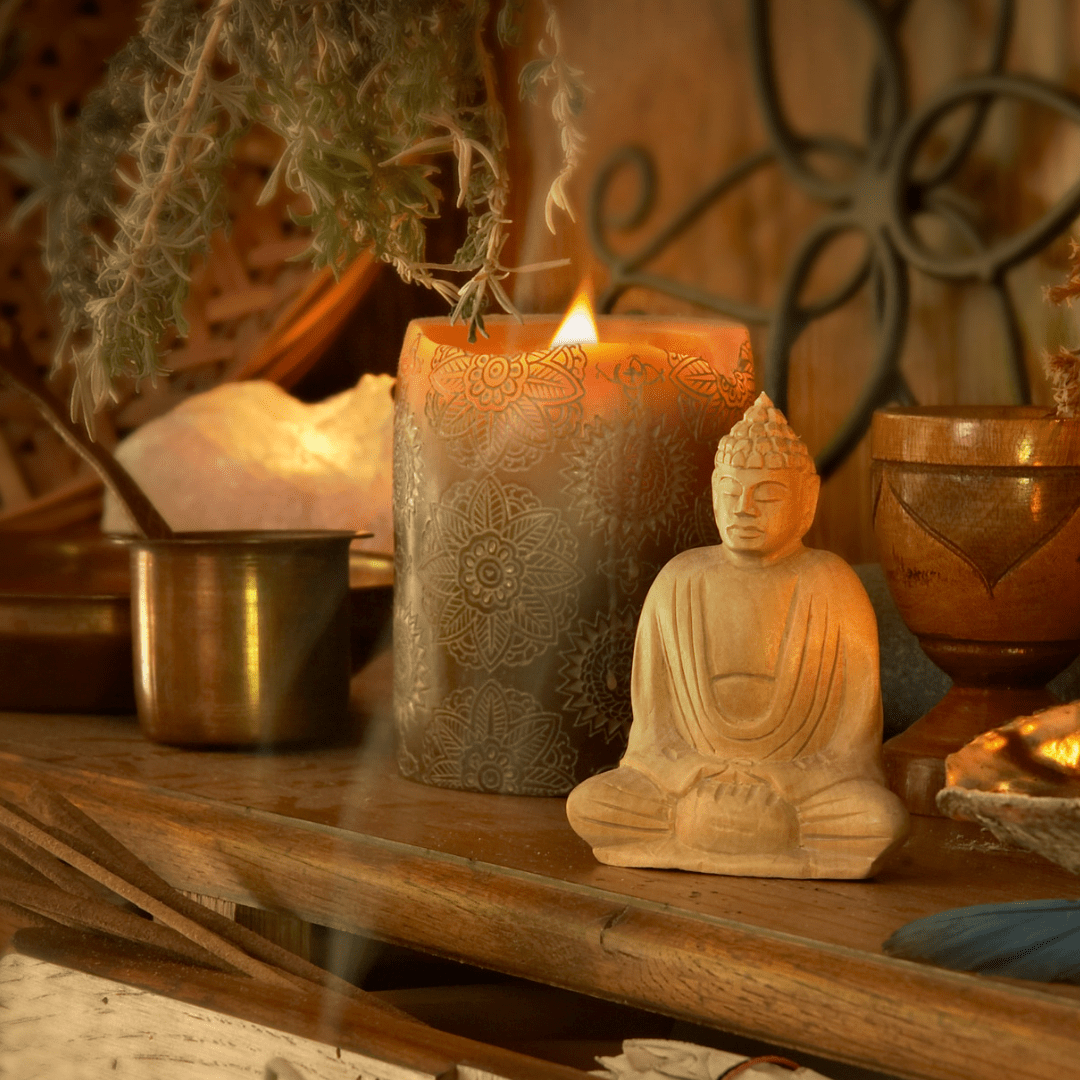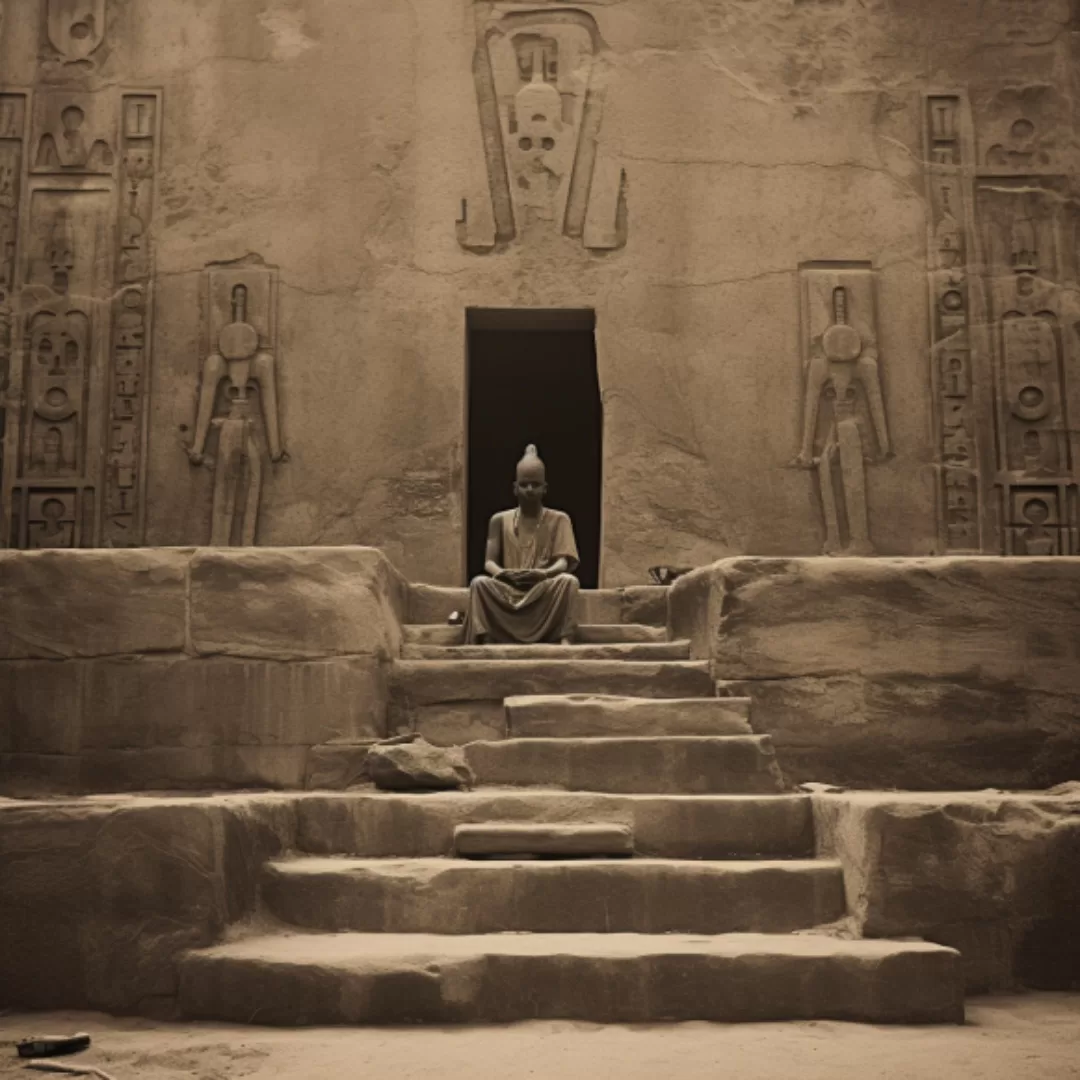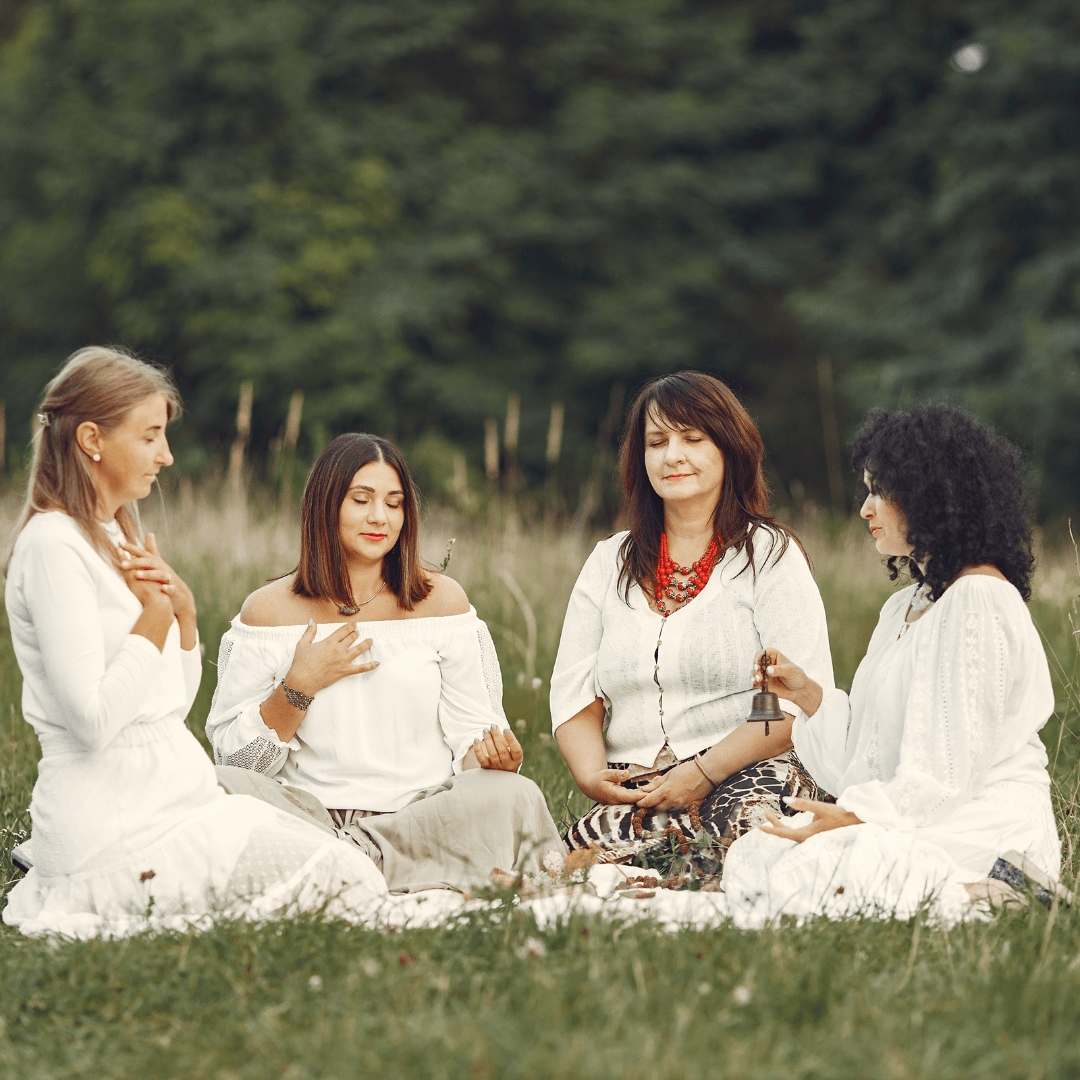Welcome to our transformative blog post, where we embark on a journey to discovering inner peace through the practice of meditation. In today’s fast-paced world, where stress and chaos seem to be constant companions, finding a sense of tranquility and harmony within ourselves has become more crucial than ever. Fortunately, meditation offers a profound path toward achieving inner peace and unlocking our true potential.
In this comprehensive guide, we will explore the essence of meditation, its historical roots, and its relevance in our modern lives. We will delve into various meditation techniques. Such as mindfulness, loving-kindness, and transcendental meditation unveil their unique approaches to cultivating inner peace. Scientific evidence supporting the benefits of meditation on mental, emotional, and physical well-being will illuminate the transformative power of this practice.
Preparing ourselves for the meditation journey is essential. We will discuss how to create a conducive environment, set intentions, and overcome challenges that may arise along the way. Integrating meditation into our daily lives will be explored. As we discover practical ways to infuse mindfulness into our routines and embrace the ripple effect of inner peace on our personal well-being, relationships, and society at large.
So, join us on this remarkable adventure as we embark on a path toward inner peace, self-discovery, and a more harmonious existence. Together, let us unlock the transformative power of meditation and embrace the possibilities it holds for our own lives and the world we inhabit.
Introduction
Exploring the Transformative Power of Meditation
In a world filled with constant hustle and bustle, finding inner peace has become a coveted goal for many individuals. Meditation, a practice that has been embraced for centuries, holds the key to unlocking this transformative power. By delving into the depths of one’s consciousness, meditation offers a profound opportunity for personal growth and self-discovery.
Importance of Discovering Inner Peace in Today’s Fast-Paced World
Amidst the chaos and demands of modern life, the importance of inner peace cannot be overstated. As we navigate through the challenges of work, relationships, and societal pressures, a sense of tranquility and harmony within ourselves becomes vital for our overall well-being. Inner peace not only enhances our mental and emotional health but also influences our physical vitality and resilience.
Meditation as a Path to Discovering Inner Peace
At its core, meditation is a contemplative practice that allows us to quiet the mind, cultivate awareness, and tap into our inner resources. This ancient art form has roots in diverse spiritual and philosophical traditions, including Buddhism, Hinduism, and Taoism. Through various techniques and approaches, meditation offers a direct path to explore our inner landscape, foster mindfulness, and achieve a state of deep relaxation.
In the following sections, we will embark on a journey to understand meditation and its profound impact on our well-being. We will delve into the different forms and techniques of meditation, uncover the scientific evidence supporting its benefits, and explore practical ways to integrate meditation into our daily lives. Let us embark on this transformative adventure, ready to discover the boundless potential that lies within us.
Understanding Meditation
Definition of Meditation and Its Historical Roots
Meditation, derived from the Latin word “meditatio,” refers to a practice of training the mind to achieve a heightened state of awareness and focus. With its roots deeply embedded in ancient traditions, meditation has been an integral part of human culture for thousands of years. From the contemplative practices of Eastern philosophies to the spiritual exercises of Western mysticism. Meditation has evolved in diverse ways across different cultures and belief systems.
Various Forms and Techniques of Meditation
Meditation encompasses a rich tapestry of forms and techniques, each offering unique paths to inner peace and self-realization. Mindfulness meditation, originating from Buddhist traditions, involves cultivating present-moment awareness and non-judgmental acceptance. Transcendental meditation, popularized by Maharishi Mahesh Yogi, utilizes the repetition of a mantra to transcend ordinary thinking and access deep states of consciousness. Other techniques include loving-kindness meditation, focused attention meditation, guided visualization, and body scan meditation.
Science-Backed Benefits of Meditation
Numerous scientific studies have validated the profound benefits of meditation on mental, emotional, and physical well-being. Research has shown that regular meditation practice can reduce stress and anxiety, enhance emotional resilience, improve concentration and focus, boost creativity, promote better sleep, and foster a sense of inner calm and balance. Moreover, meditation has been found to positively impact brain structure and function, promoting neuroplasticity and enhancing cognitive abilities.
We will delve deeper into these different forms of meditation, exploring their techniques, benefits, and practical applications. By understanding the diverse approaches to meditation and the scientific evidence supporting its efficacy. We can harness this transformative practice to cultivate inner peace and navigate the challenges of our fast-paced world.

Preparing for Meditation
Creating a Conducive Environment for Meditation
- Choosing a Quiet and Comfortable Space
Select a peaceful environment where you can engage in meditation without distractions. Find a quiet room or corner in your home or seek out serene outdoor spaces. Ensure that the area is free from noise, interruptions, and clutter.
- Setting up Props for Physical Support
Arrange cushions, blankets, or a meditation mat to provide comfortable support for your body during meditation. Experiment with different sitting positions like cross-legged, kneeling, or using a meditation bench to find what works best for you.
Setting the Intention for the Meditation Practice
- Reflecting on Personal Goals and Aspirations
Take a moment to contemplate your reasons for practicing meditation. Clarify your intentions, whether it’s reducing stress, improving focus, cultivating self-compassion, or exploring spiritual growth. Reflecting on your goals will help you stay motivated and also focused throughout your meditation journey.
- Cultivating a Positive Mindset and Open Attitude
Approach meditation with an open mind, free from judgment or expectations. Embrace a sense of curiosity, allowing yourself to explore the present moment with acceptance and non-resistance. Cultivate an attitude of kindness and self-compassion, allowing room for growth and learning.
In the upcoming sections, we will explore various meditation techniques, such as mindfulness, loving-kindness, and transcendental meditation. These practices, combined with a supportive environment and the right mindset, will lay the foundation for a fulfilling and transformative meditation experience. By preparing ourselves mentally, physically, and emotionally, we can also embark on this inner journey with openness and receptivity.
Techniques for Meditation
Mindfulness Meditation
- Explanation of Mindfulness and Its Relevance in Meditation
Mindfulness involves directing our attention to the present moment with curiosity and non-judgment. It is the practice of observing our thoughts, emotions, and bodily sensations without getting caught up in them. Mindfulness meditation cultivates awareness, allowing us to better understand our inner experiences and the world around us.
- Step-by-Step Guide on Practicing Mindfulness Meditation
- Find a comfortable sitting position, either on a cushion or a chair.
- Close your eyes or soften your gaze, bringing your attention to the breath.
- Notice the sensations of the breath as you inhale and exhale, without trying to change it.
- Whenever your mind wanders, gently redirect your attention back to the breath.
- Observe them without judgment as thoughts, emotions, or sensations arise, allowing them to come and go.
- Engage in this practice for a predetermined period, gradually increasing the duration as you progress.
Loving-Kindness Meditation
- Introduction to Loving-Kindness Meditation and Its Purpose
Loving-kindness meditation involves cultivating feelings of compassion, love, and goodwill towards oneself and others. It aims to develop a sense of connection and empathy, fostering kindness and understanding in our interactions.
- Instructions on Cultivating Compassion and Empathy through this Practice
- Sit comfortably and bring to mind someone you care about deeply.
- Silently repeat phrases of well-wishing towards that person, such as “May you be happy, may you be healthy, may you be at peace.”
- Extend these wishes to yourself, loved ones, acquaintances, and even challenging individuals or all beings.
- As you repeat the phrases, try to generate genuine feelings of love and compassion.
- If difficulties arise, acknowledge them without judgment and gently return to the practice.
Transcendental Meditation
- Overview of Transcendental Meditation and Its Unique Approach
Transcendental meditation (TM) is a technique where practitioners use a personalized mantra to access a state of deep relaxation and transcend thought. It involves sitting comfortably with closed eyes and silently repeating the mantra, allowing the mind to settle into a state of profound inner stillness.
- Briefly Discuss Mantra-Based Meditation and Its Benefits
Mantra-based meditation involves the repetition of a specific word or sound, like a mantra or sacred syllable. This repetitive focus helps calm the mind, leading to a state of tranquility and also heightened awareness. Regular practice of mantra-based meditation can also reduce stress, improve concentration, and promote spiritual growth.
We will delve deeper into each meditation technique in the upcoming sections, providing detailed guidance and practical tips for meaningful practice. By exploring these diverse approaches, you can choose the technique that resonates with you and embark on a transformative journey toward inner peace and self-discovery.
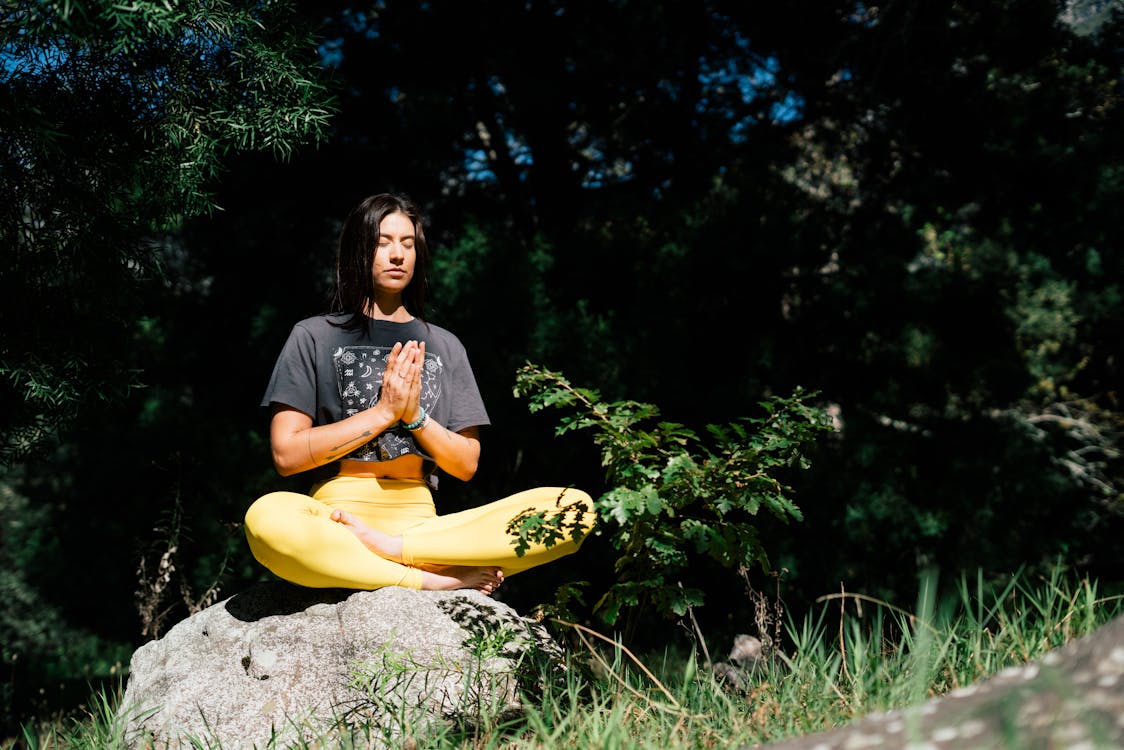
Overcoming Challenges in Meditation
Dealing with a Restless Mind and Wandering Thoughts
- Techniques to Focus and Anchor the Mind During Meditation
- Use the breath as an anchor, gently bringing your attention back whenever the mind wanders.
- Count your breaths or repeat a simple phrase to maintain focus.
- Incorporate guided meditations or meditation apps to provide structure and guidance.
- Emphasize the Non-Judgmental Attitude toward Thoughts
- Recognize that thoughts are a natural part of meditation; they will arise and pass.
- Instead of getting frustrated or judging yourself, cultivate a non-judgmental attitude towards thoughts, allowing them to come and go without attachment.
Managing Physical Discomfort and Restlessness
- Adjusting Posture and Using Props for Comfort
- Experiment with different sitting positions and find one that is comfortable and sustainable for you.
- Utilize cushions, blankets, or meditation benches to support your body and also alleviate any discomfort.
- Incorporating Gentle Movement or Stretching if Necessary
- If physical discomfort becomes overwhelming, introduce gentle movements or stretches to release tension and regain focus.
- Engage in mindful walking or yoga to bring awareness to the body and enhance overall comfort.
Addressing Expectations and Frustrations in the Meditation Journey
- Encouraging Patience and Self-Compassion
- Understand that meditation is a practice that requires time and patience to develop.
- Cultivate self-compassion by accepting that progress may be gradual and acknowledging that every meditation experience is valuable, regardless of its perceived “success.”
- Sharing Tips for Maintaining Consistency in Practice
- Establish a regular meditation schedule and commit to it.
- Start with shorter sessions and gradually increase the duration as your practice strengthens.
- Seek support from meditation groups or online communities to stay motivated and share experiences.
In the following sections, we will explore ways to integrate meditation into daily life and the ripple effect of finding inner peace. By acknowledging and addressing the challenges that may arise during meditation, we can cultivate resilience, maintain consistency, and reap the transformative benefits of this practice.
Integrating Meditation into Daily Life
Emphasize the Importance of Regularity and Consistency in Meditation
Consistency is key when it comes to reaping the full benefits of meditation. You can gradually cultivate a deeper sense of inner peace and well-being by establishing a regular practice, even for a few minutes each day. Make meditation a priority in your daily routine and create a dedicated space and time for your practice.
Suggest Incorporating Short Mindfulness Practices throughout the Day
Integrating mindfulness into your daily life can enhance your overall well-being and bring a sense of presence to each moment. Consider incorporating short mindfulness practices throughout the day, such as:
- Mindful Breathing: Take a few mindful breaths whenever you feel overwhelmed or stressed, bringing your attention to the sensations of your breath.
- Mindful Eating: Engage in mindful eating by savoring each bite, and paying attention to the flavors, textures, and sensations of the food.
- Mindful Walking: During your walks, be fully present and observe the sensations in your body, the sights and sounds around you, and the movement of your feet.
Explore Ways to Integrate Mindfulness into Daily Activities
- Mindful Morning Rituals: Start your day with intention by incorporating mindfulness into activities such as brushing your teeth, taking a shower, or preparing breakfast. Bring your full attention to each action and also engage your senses.
- Mindful Communication: Practice active listening and full presence in your conversations, being fully attentive to the words, body language, and also emotions of others.
- Mindful Pause: Take moments throughout the day to pause, breathe, and check in with yourself. This can help you reconnect with the present moment, reduce stress, and cultivate a calm sense.
By integrating meditation and mindfulness into your daily life, you can extend the benefits beyond formal practice sessions. The more you infuse these practices into your routine, the more you’ll experience a profound shift in your awareness and a greater sense of inner peace and clarity.

The Ripple Effect of Inner Peace
The Positive Impact of Discovering Inner Peace on Personal Well-Being
Discovering inner peace through meditation has far-reaching effects on our overall well-being. When we cultivate a state of inner calm and balance, we experience reduced stress levels, improved emotional resilience, and enhanced mental clarity. Inner peace allows us to navigate life’s challenges with greater equanimity and a sense of groundedness.
How Inner Peace Can Positively Influence Relationships
Our relationships and interactions with others also benefit when we are at peace within ourselves. Inner peace fosters qualities such as compassion, empathy, and patience, which help us connect more deeply with others. It allows us to approach conflicts with understanding and to communicate more effectively, creating a harmonious and nurturing environment in our personal and professional relationships.
Societal Benefits of a More Peaceful and Mindful Collective
Imagine a society where individuals prioritize inner peace and mindfulness. A society where people are more self-aware, compassionate, and attuned to the needs of others. The ripple effect of inner peace extends beyond individual well-being and has the potential to foster a more peaceful and harmonious collective. It can also lead to reduced aggression, improved cooperation, and a greater sense of social responsibility, ultimately contributing to the betterment of society as a whole.
In conclusion, discovering inner peace through meditation is not only a personal journey but also has far-reaching implications for our relationships and the world around us. By nurturing inner peace, we create a positive ripple effect that extends to our well-being, our interactions, and also the society we inhabit. Let us embrace the transformative power of inner peace and also inspire others to embark on their own meditation journey, fostering a more peaceful and harmonious world.
Conclusion
Main Points Discussed in the Blog Post
Throughout this blog post, we have explored the transformative power of meditation as a path to discovering inner peace. We began by understanding the importance of inner peace in today’s fast-paced world and how meditation offers a means to achieve it. In this post, we delved into the various forms and techniques of meditation, such as mindfulness, loving-kindness, and transcendental meditation, and examined their science-backed benefits. We also addressed common challenges in meditation and offered practical tips to overcome them. Furthermore, we explored integrating meditation into daily life and discussed the ripple effect of inner peace on personal well-being, relationships, and society.
The Meditation Journey for Inner Peace
As we conclude this blog post, I encourage you, the reader, to embark on your meditation journey for the pursuit of inner peace. Whether you are new to meditation or have an established practice, the benefits are within your reach. Set aside time each day, create a supportive environment, and explore different meditation techniques to find what resonates with you. Be patient and also compassionate with yourself, knowing that the journey toward inner peace is a gradual and unique process.
Discover a More Peaceful and Harmonious World
By cultivating inner peace within ourselves, we contribute to a more peaceful and harmonious world. Each individual’s pursuit of inner peace creates a ripple effect that also extends to our relationships, communities, and beyond. Let us hold the vision of a society where mindfulness, compassion, and understanding are valued and peace becomes the foundation for meaningful connections and collective well-being.
In closing, I invite you to embark on this beautiful journey of self-discovery and inner peace through meditation. May it bring you profound transformation, deep joy, and a renewed sense of purpose. Together, let us create a world where inner peace becomes a guiding light in our fast-paced lives, nurturing our souls and fostering a more compassionate and interconnected human experience.
